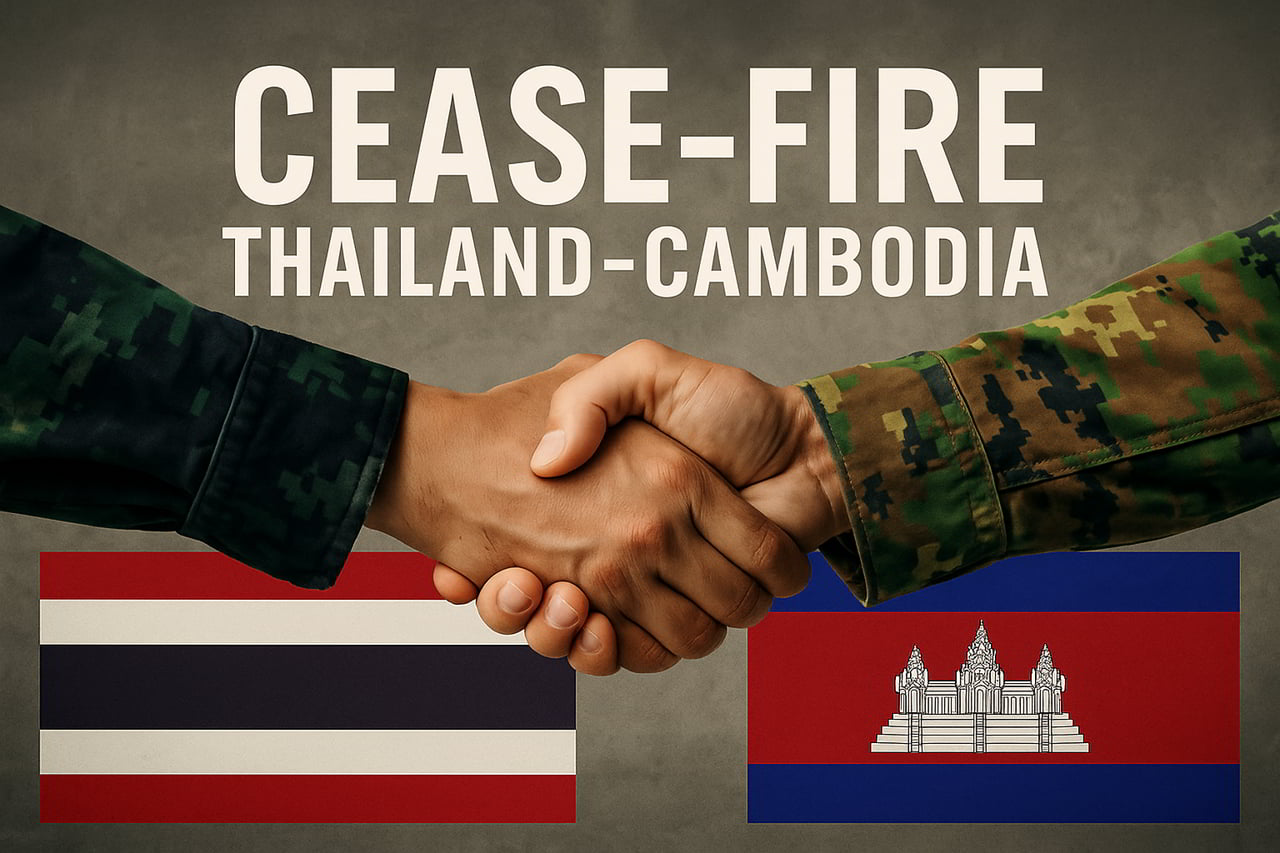
Thailand–Cambodia Ceasefire: A Fragile Agreement Under Pressure
Written by the editors of theo-courant.com, your reference guide to Thailand and South-East Asia - based in Bangkok, at the heart of Thai culture.

A direct and unconditional ceasefire was signed on July 28, 2025, but both Thailand and Cambodia immediately accused each other of violations — amid an already devastating humanitarian toll.
Ceasefire Signed in Putrajaya Under ASEAN Mediation
On July 28, 2025, during high-level talks in Putrajaya (Malaysia), and with support from Malaysia and China, Thailand and Cambodia signed an immediate and unconditional ceasefire, effective from midnight local time.
Mutual Accusations Cloud the Truce
Despite the agreement, both sides continue to issue conflicting statements and accuse each other of violations:
- Thailand: Military spokesperson Winthai Suwaree claims Cambodian forces launched attacks just hours after the truce began, citing dozens of casualties and ongoing shelling in border villages.
- Cambodia: Denies any violations and insists the ceasefire has been respected in full, rejecting Thailand’s claims as baseless propaganda.
Ceasefires Are Never Instantaneous
Ceasefires rarely take effect uniformly at midnight. Orders must be relayed to all units, tensions on the ground need to be defused, and local commanders must coordinate.
A Malaysian observation mission has been planned, and a bilateral border committee will convene on August 4 to reinforce implementation and ease misunderstandings.
Human Toll: Casualties and Displacement
Fatalities
- At least 35–38 deaths over the five days preceding the truce:
- Thailand: 11 soldiers + 13 civilians = 24 dead
- Cambodia: 5 soldiers + 8 civilians = 13 dead
Injuries
- Thailand: 29 soldiers and 36 civilians injured
- Cambodia: Approximately 71 injured, both military and civilian
Displacement
- Thailand: ~138,000 displaced persons
- Cambodia: ~134,700 displaced persons
- Total: ~272,700 civilians uprooted
Figures are based on consolidated reports from multiple credible sources.
Is Peace Really at Hand?
The July 28 ceasefire aimed to end a bloody escalation between the two neighbors.
Yet its shaky start raises doubts about both sides’ commitment. Mutual blame for violations within hours of signing undermines hopes for de-escalation.
It’s crucial to remember that a ceasefire is a process, not a magic switch. It requires effective communication, international oversight, and above all, trust — still in short supply.
In the meantime, civilians are bearing the brunt. With over 37 dead, 136 injured, and 270,000 displaced in less than a week, peace must be more than a signature on paper — it must take shape on the ground.
⚠️ Travel Advisory: Border Situation
Status at Border Crossings
Due to recent clashes, most Thailand–Cambodia border checkpoints remain closed or are operating with heavy restrictions:
- Aranyaprathet / Poipet: Open only to nationals and medical emergencies.
- Chong Sa Ngam / Anlong Veng: Fully closed until further notice.
- Chong Chom / O’Smach: Access allowed in limited numbers under military escort.
Recommendations for Travelers
- Monitor official embassy travel alerts closely.
- Avoid border areas between *isaket (Thailand) and Oddar Meanchey or Banteay Meanchey (Cambodia).
- If necessary, choose air travel between Bangkok and Siem Reap or Phnom Penh.
As of now, flights between the two capitals remain operational, but passengers should expect increased security screening upon arrival.
Sources
- Le Monde: Thailand accuses Cambodia of ceasefire violations
- Reuters: Thailand-Cambodia border calm as military talks postponed
- AP News: Ceasefire disputed by both sides
- Al Jazeera: Live coverage of border clashes



